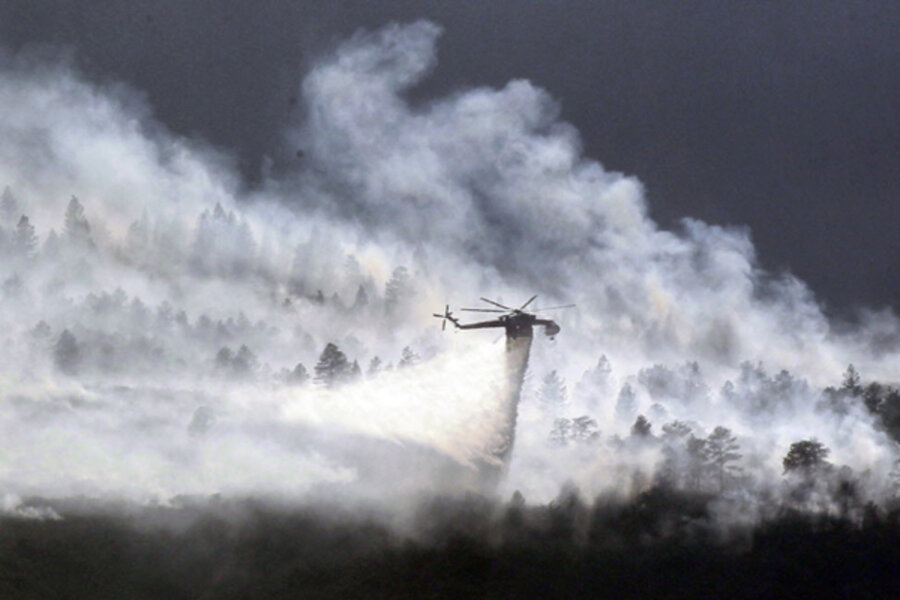Wildland fires: New yardstick for risk aims to help protect communities
Loading...
| ASHLAND, ORE.
Over the years, scientists have created measurement scales to assess the risk of earthquakes, hurricanes, and tornadoes. In addition to measuring the severity of individual events, the scales are used to help determine the design and location of homes and other structures in the likely path of such natural disasters.
Now, researchers with the Commerce Department’s National Institute of Standards and Technology and the US Forest Service have crafted the first such system to help landowners and communities better prepare for and resist another threat: wildland fires.
Such fires have become a growing threat in what’s known as the “wildland-urban interface” (WUI) – those places where suburban development has pushed farther and farther into forests, natural grasslands, and other areas where fire is part of the natural ecology, especially in the American West.
According to the US Bureau of Land Management’s Interagency Fire Center, the 10-year period beginning in 2002 saw an annual average of nearly 71,000 wildland-urban fires that burned a total of 4.7 million acres. Through October 2012, the number of such fires is slightly below average (54,000), but the amount of damage is nearly double (9.1 million acres).
The interagency fire center estimates that federal agencies spend some $1.2 billion a year on WUI fire suppression, with state and local agencies spending millions more. In many cases, the cost could have been lessened – and perhaps lives saved – if the growth of foliage around homes and other structures had been kept in check and if more fire-resistant materials had been used in building such structures.
"Wildfires are among the few natural disasters in which risk levels can rapidly change as the event progresses, and the threat doesn't weaken with distance away from a well-defined epicenter, as in a tornado," says William Mell, the Forest Service researcher who helped design the WUI Fire Hazard Scale. "For example, if your home is nestled deep within a neighborhood away from the leading edge of a fire, you might not be at risk early on. However, the danger to your home dramatically increases if a neighboring house, the surrounding landscape, or a nearby vehicle catches on fire."
The fire hazard scale announced Wednesday is a matrix with three dimensions: fuel sources, type of topography, and weather conditions, particularly winds. Depending on the severity of exposure to fire or embers, the risk to a specific community can be mapped and addressed.
The goal then is to improve building standards, codes, and practices – including those involving trees, shrubs, and other fuel sources growing near homes and other structures, pinpointing where protective measures are most needed. That’s where things can get politically sticky as the various stakeholders – property owners, builders, and regulating agencies – become involved, weighing risks, benefits, costs, and rights.
But, says Alexander Maranghides of the National Institute of Standards and Technology, "If homes and other buildings in the most susceptible zones can be built or retrofitted to high-risk standards, they could potentially serve as a 'frontline defensive wall' for the structures in the lower-risk zones they surround.”
"In effect,” he says, “we may be able to mitigate the entire dynamic of a WUI fire event if the frontline structures don't ignite.”








